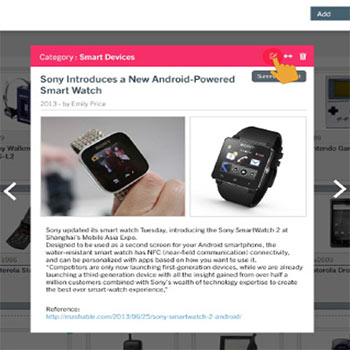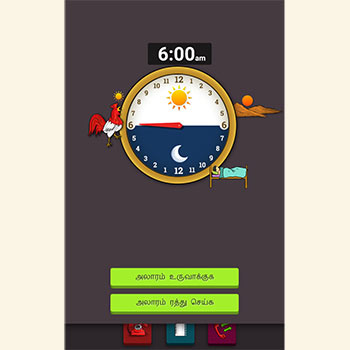The aim of this project is to design a localized user interface of smart phones for the literate, but non English proficient users. For Localization, one needs to culturally adapt the user interface. Efficient UI localization for Tamil speaking people is still not available. User study was done to learn about the cultural behaviour of the users, through which design heuristics were derived. The design heuristics are: 1. Use text or voice assistance to direct the user. 2. Use localized metaphors or skeuomorphism. 3. Perform critical tasks only with these four gestures: single tap, press and hold, swipe up and swipe down 4. Standardize interaction elements to be distinguished from other static elements visually 5. Choose translation or transliteration based on the familiarity of terms. 6. Use illustrations representing events or actions. 7. Give less functions in a screen at a time. 8. Reveal features gradually. Abstract Interface design was tried out for three touch phone applications, namely, Alarm Clock, Phone Book and Message. The interface of these applications were redefined according to these heuristics. The designs were tested with the users, with a set of evaluation criteria. From the evaluations it was found that the use of text and voice assistance along with translation and transliteration helped to a certain extent of performance. It failed at places where the user was not able to relate the content and the action to be performed. The heuristics related to visual like ‘use of metaphor and skeuomorphism’ were quite successful. It helped to understand and remember gestures too e.g: swipe to turn a page in phone book app. The structure related heuristics like ‘Give less functions in a screen at a time’ and ‘reveal features gradually’ failed to make the user understand the conceptual model. Future scope for the project could be developing more applications based on these heuristics, which could be useful and adaptable for the selected user group. The project contributes in new ways for approaching localization of smart phones. It mainly focuses on giving the user the knowledge of how to use an interface when they encounter it for the first time. Also this project tries to prove that the heuristics derived can act as a base for designing any user interface for such user group.



